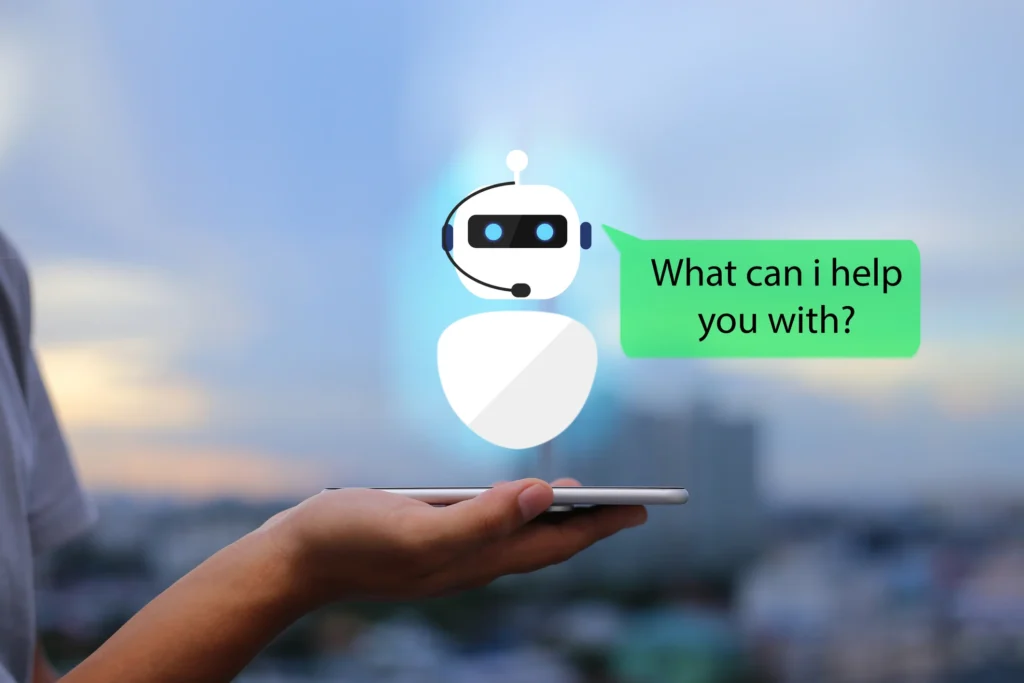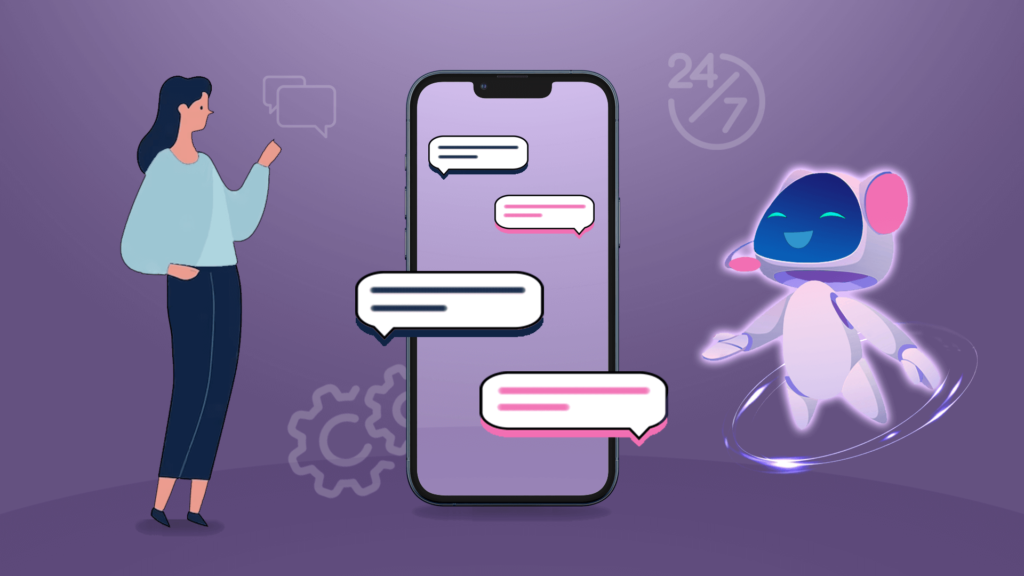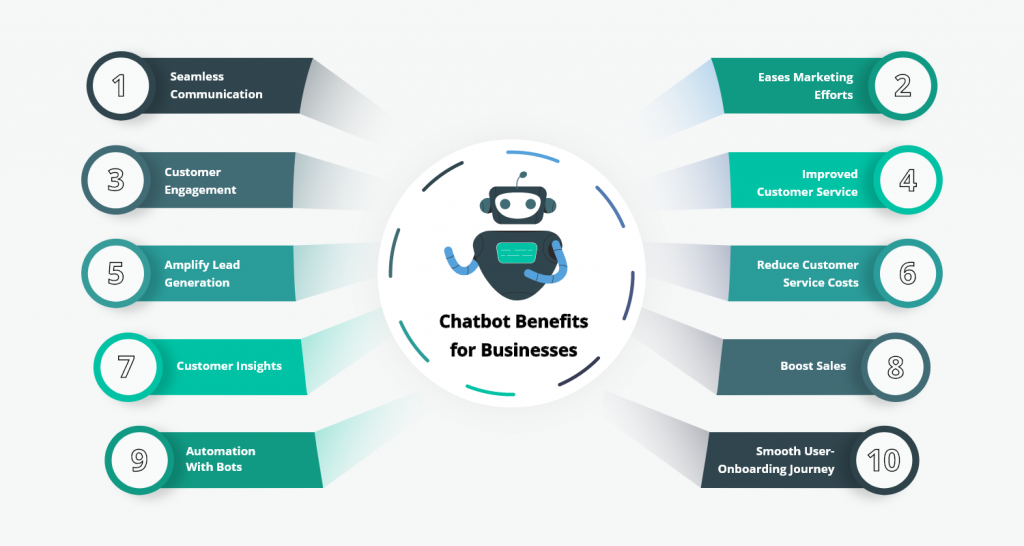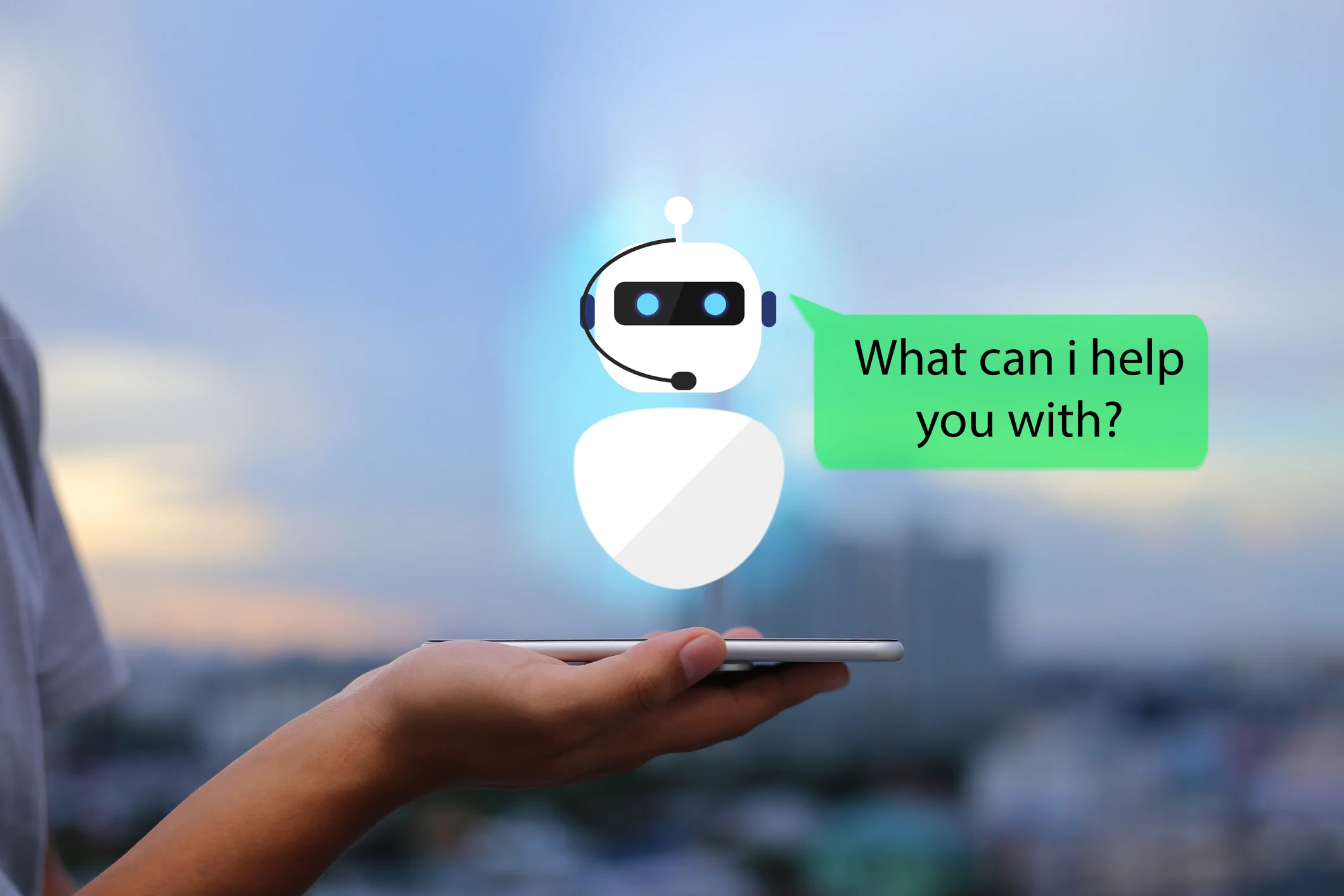Understanding the Role of Chatbots in Customer Support
Customer support has always been about solving problems, answering questions, and keeping customers happy. But let’s face it: traditional methods haven’t always been smooth sailing. Waiting on hold, navigating complex phone menus, or getting transferred a dozen times is the stuff of customer nightmares.
Enter chatbots—the AI-powered sidekicks that are reshaping customer service. These digital helpers can handle customer inquiries faster, provide round-the-clock support, and even improve the overall customer experience. Whether you’re trying to answer simple tasks or manage complex issues, chatbots step in to deliver a more seamless service. But what’s their actual role in customer support? Why are businesses across the globe turning to customer service bots? In this blog about the role of chatbots, we’ll dive into the customer interactions they enhance, the tasks they automate, and how they’re giving human agents the freedom to focus on more complex tasks.

Let’s break it all down and see how chatbots are revolutionizing the way we support customers in today’s fast-paced, AI-driven world.
What Are Chatbots? A Simple Breakdown
At their core, chatbots are computer programs designed to interact with humans through text or voice. They’re powered by technologies like machine learning and natural language processing, which allow them to understand and respond to customer questions in a conversational way. Think of them as digital assistants that help businesses provide faster, smarter, and more efficient customer support.
There are two main types of chatbots you’ll come across:
- Rule-Based Chatbots
These follow pre-programmed rules and scripts. They’re great for handling routine tasks like answering FAQs or guiding users to a specific service. But if the query gets too complex, they might fall short. - AI-Powered Chatbots
These are the more advanced kind, often referred to as AI chatbots. They use large language models and generative AI to process and understand customer context better. This means they can tackle complex requests, provide personalized service, and even learn from past interactions.

G2
How They Work: When a customer sends a message—whether on a website, app, or messaging app—the chatbot interprets the query, searches for the most relevant information, and responds. Some are even equipped to connect to knowledge bases or transfer the conversation to a human agent if needed. From automating simple tasks to providing multilingual support, chatbots are quickly becoming an integral part of how businesses support customers.
Why Businesses Use Chatbots to Support Customers
Chatbots are game-changers for customer service teams. Here’s how they make life easier:
- 24/7 Availability: Unlike humans, chatbots never need a break. They’re available day and night, even during peak hours, to ensure customers are always supported.
- Multilingual Support: Chatbots can communicate in different languages, either by asking for a preferred language or detecting it automatically using AI-powered systems.
- Personalized Experiences: By analyzing customer data and behavior, chatbots can adapt their responses to the customer journey, offering relevant recommendations and solutions.

Addevice
Role of Chatbots and How They Work Behind the Scenes
Here’s a breakdown of the tech that powers customer service bots:
- Artificial Intelligence (AI): The backbone that enables chatbots to analyze and solve problems.
- Machine Learning: Chatbots learn and improve over time by analyzing customer feedback and interactions.
- Large-Language Models (LLMs): These advanced systems process natural language to deliver human-like responses.
With this cutting-edge technology, chatbots provide fast, intelligent solutions that improve both the customer experience and the efficiency of support teams.
Benefits of Chatbots for Customers

1. Fast and Always Available
Chatbots never sleep. They’re available 24/7, providing instant assistance no matter the time. This means customers don’t have to wait for human agents during regular business hours or endure delays during peak hours. For time-sensitive inquiries, like resetting a password or tracking an order, chatbots deliver quick solutions that keep the process moving.
2. Handling Routine and Complex Tasks
Chatbots excel at managing routine tasks, like answering FAQs or helping customers navigate a website. They also assist with complex requests by collecting details and escalating the issue to a human agent when necessary. This balance ensures customers get efficient support, whether the issue is simple or requires a more hands-on approach.
3. Personalized Customer Experiences
Modern AI-powered chatbots analyze customer data to offer personalized recommendations and solutions. Whether it’s suggesting products based on past purchases or tailoring messages to the customer journey, these bots make interactions feel personal.
4. Multilingual Support for Global Audiences
Chatbots with multilingual support ensure seamless communication with customers worldwide. They can ask for the user’s preferred language or detect it automatically, making support accessible to everyone.
5. Improved Customer Engagement
By providing instant responses and tailored solutions, chatbots enhance customer engagement. They make every interaction feel smooth and proactive, leaving customers with a positive impression of the brand.
Benefits of Chatbots for Businesses

Perplexity
1. Enhanced Efficiency and Cost Savings
Chatbots handle a significant volume of customer inquiries, especially simple tasks that don’t require human intervention. This reduces the workload for customer service agents, allowing them to focus on complex tasks.
By automating routine tasks, businesses save on staffing costs, making chatbots a cost-effective solution for scaling customer support. They also operate 24/7, eliminating the need for overnight shifts or overtime.
2. Improved Customer Data Insights
Chatbots collect valuable customer feedback and interaction data. Businesses can use these insights to:
- Identify common issues and improve products or services.
- Enhance chatbot performance by training them with real-world scenarios.
- Personalize future customer interactions to increase satisfaction and customer loyalty.
This ability to learn and adapt makes chatbots a strategic tool for improving customer experience over time.
3. Seamless Integration with Business Systems
Chatbots integrate with CRMs, knowledge bases, and other tools, ensuring that every interaction is part of a unified system. They provide agents with customer context, so when a chatbot hands off a query to a human agent, the conversation continues smoothly.
4. Scalable Support for Growing Businesses
As businesses grow, the volume of customer queries can skyrocket. Chatbots are easily scalable, capable of managing thousands of conversations at once without compromising quality or speed. This scalability allows businesses to expand their support team without hiring additional staff, making chatbots a perfect fit for companies aiming to serve more customers efficiently.
5. Boosted Customer Satisfaction and Loyalty
Quick resolutions, personalized responses, and consistent service build trust and loyalty among customers. Satisfied customers are more likely to return, recommend the business to others, and become long-term advocates for the brand. By improving efficiency, reducing costs, and enhancing the customer journey, chatbots prove to be a win-win solution for both customers and businesses.
Key Features of Customer Service Chatbots
1. Automating Routine Tasks
Chatbots excel at handling repetitive, low-effort jobs that would otherwise take up a significant portion of a support agent’s time. These tasks include:
- Answering FAQs.
- Assisting with order tracking.
- Guiding customers through basic troubleshooting.
By taking over these routine tasks, chatbots free up human agents to focus on high-value customer interactions.
2. Resolving Issues and Answering Questions
When a customer inquiry comes in, chatbots use natural language processing (NLP) to understand the request and provide an accurate, immediate response. For more complex requests, chatbots can gather relevant details and seamlessly transfer the case to a human agent—complete with context—ensuring faster resolutions.
3. Proactive Customer Service
Chatbots can anticipate customer needs by monitoring activity and reaching out proactively. Examples include:
- Sending order status updates.
- Notifying customers of payment issues.
- Recommending products or services based on browsing behavior.
This proactive approach reduces friction and enhances the customer journey.
4. Delivering Omnichannel Support
Modern chatbots are designed to work across multiple platforms, including:
- Websites.
- Messaging apps like WhatsApp and Facebook Messenger.
- Social media channels.
By providing omnichannel support, chatbots ensure a consistent experience, no matter where customers choose to interact with the brand.
5. Offering Self-Service Solutions
For customers who prefer to solve issues independently, chatbots act as a guide, directing them to resources like:
- Knowledge bases or help center articles.
- Community forums.
- FAQs.
This not only empowers customers but also reduces the workload on the support team.
Supporting Customer Service Agents: A Perfect Partnership

Chatbots streamline workflows by taking on repetitive and time-consuming tasks, such as logging tickets and responding to common customer queries. This allows human agents to focus their efforts on more complex issues that require creativity and empathy. By automating routine responsibilities, chatbots make processes more efficient and free up agents to deliver exceptional service.
For new agents, chatbots play a vital role in easing the onboarding process. They act as virtual assistants, providing instant answers to questions and surfacing relevant knowledge base articles or guides during live interactions. Self-service tools offered by chatbots simplify the learning curve, creating a smoother training experience and accelerating new agents’ readiness to contribute effectively.
Employee burnout and churn are common in environments with high workloads and repetitive tasks. Chatbots help alleviate these issues by handling simple tasks, reducing stress on human employees, and boosting job satisfaction. When employees are happier, they are more likely to stay, which helps businesses build stronger and more stable support teams.
In addition to streamlining workflows, chatbots enhance complex case handling by providing detailed context to human agents during escalations. Information such as past interactions, customer preferences, and the specific issue at hand is included, ensuring agents can resolve problems quickly and effectively without requiring customers to repeat themselves. This seamless transition improves the overall customer experience and boosts productivity.
Cost-Effective Customer Support
- Minimize Support Costs
Automate simple tasks like FAQs to reduce reliance on large support teams. - Reduce Staffing Expenses
Handle routine tasks without needing extra hires for night shifts or peak periods. - 24/7 Support Without Extra Costs
Provide round-the-clock assistance without overtime or additional shifts. - Boost Productivity
Manage multiple customer interactions simultaneously to serve more customers efficiently. - Lower Ticket Volume
Direct customers to self-service options like knowledge bases to reduce unnecessary support tickets.
Scalability and Efficiency: Serving More Customers with Chatbots
Chatbots are designed to handle high volumes of customer interactions seamlessly, whether it’s during a sudden spike in demand during peak hours or as a business expands its customer base. Unlike human agents, chatbots don’t get overwhelmed, ensuring that every customer receives timely assistance, no matter how busy things get. For businesses with a global presence, chatbots provide consistent service across time zones. Their 24/7 availability and multilingual support break down barriers like language challenges and differing working hours, delivering a unified experience for all customers.
As businesses grow, so do their support needs. Chatbots make it possible to scale customer support without the costs of hiring additional staff or investing in new infrastructure, making them an efficient solution to maintain service quality during periods of growth. By taking over routine tasks and repetitive queries, chatbots free up support teams to focus on more complex or strategic initiatives, boosting overall productivity. Additionally, chatbots are invaluable during seasonal demand surges, like retail holidays, where they manage increased customer inquiries efficiently, eliminating the need for temporary hires while maintaining excellent service.
Measuring Chatbot Success: How to Gauge Impact
1. Track Customer Satisfaction (CSAT)
Customer satisfaction scores are a key indicator of chatbot effectiveness. Measuring how happy customers are with chatbot interactions provides insights into areas for improvement.
Example Metrics to Monitor:
- CSAT survey results after a chatbot interaction.
- The percentage of positive versus negative feedback collected.
2. Analyze Resolution Rates
A successful chatbot should resolve a significant portion of customer inquiries independently. Tracking resolution rates can show how well the chatbot handles simple tasks versus when issues need to be escalated to a human agent.
Key Metrics:
- Percentage of inquiries resolved without escalation.
- Average time to resolution for chatbot-handled cases.
3. Monitor Efficiency Metrics
Chatbots are designed to enhance efficiency, so monitoring metrics like response times and ticket deflection rates is essential.
Questions to Ask:
- How quickly does the chatbot respond to a query?
- How many inquiries are deflected from the service team to self-service solutions?
4. Evaluate Engagement Rates
Engagement is another indicator of chatbot success. Metrics like conversation length, the number of interactions per session, and follow-up actions can provide insights into how customers are using the chatbot.
Key Insights:
- Are customers engaging with self-service options?
- Is the chatbot encouraging users to take desired actions, like making a purchase or filling out a feedback form?
5. Collect Customer Feedback
Feedback directly from users is invaluable for measuring success. Asking customers for their input—whether through surveys or post-chat ratings—can reveal areas where the chatbot excels or falls short.
6. Leverage Business Metrics
Beyond customer-facing metrics, businesses can evaluate the ROI of their chatbot by measuring cost savings, increased productivity, and support scalability.
By regularly analyzing these metrics, businesses can ensure their chatbots are not just meeting expectations but actively improving the customer experience and enhancing operational efficiency.
Implementing a Customer Service Chatbot: Tips for Success

1. Define Clear Goals
Before deploying a chatbot, it’s essential to understand its purpose. Ask questions like:
- What types of customer queries will the chatbot handle?
- Are you aiming to reduce ticket volume, improve response times, or enhance the customer experience?
Having clear goals ensures your chatbot aligns with your business objectives and delivers measurable results.
2. Choose the Right Technology
Not all chatbots are created equal. Select a chatbot platform that supports:
- Natural language processing (NLP) for better understanding of customer interactions.
- Multilingual support to serve a global audience.
- Integration with CRMs, knowledge bases, and other tools for a seamless experience.
Opt for an AI-powered chatbot with the ability to learn and improve over time.
3. Start with Simple Tasks
When implementing a chatbot, it’s best to start small. Focus on routine tasks like answering FAQs or providing order updates. Once the chatbot performs well in these areas, gradually expand its capabilities to handle complex requests.
4. Train Your Chatbot Regularly
Chatbots need training to stay effective. Use customer feedback, chat logs, and FAQs to keep the chatbot updated with relevant information. Regular training ensures the bot delivers accurate and consistent responses.
5. Ensure Smooth Escalation to Human Agents
Even the best chatbot can’t handle everything. Make sure there’s a clear process for escalating complex issues to human agents. Provide agents with all necessary customer context, so they can seamlessly pick up where the chatbot left off.
6. Monitor and Optimize Performance
Track key metrics like resolution rates, response times, and customer satisfaction. Use this data to identify areas for improvement and refine the chatbot’s functionality.
7. Communicate Clearly with Customers
Set realistic expectations for what the chatbot can do. Let customers know when they’re interacting with a bot and provide options to connect with a human agent if needed. This transparency builds trust and ensures a positive customer experience.
How to Overcome Chatbot Limitations: A Smart Approach
- Know When to Pass the Baton
- Chatbots shine with routine tasks but stumble on ambiguous or complex issues.
- 🛠️ Solution: Always have human agents ready to step in when needed. Be transparent with customers about escalation options.
- Mix Automation with a Human Touch
- Automation is efficient, but empathy and creativity belong to humans.
- 💡 Solution: Use a hybrid approach—chatbots handle repetitive tasks while agents focus on delivering personalized care.
- Upgrade to Smarter Tech
- Outdated chatbots can’t keep up with advanced customer needs.
- 🚀 Solution: Invest in tools with AI-powered NLP, large language models, and multilingual support. Regular updates are a must!
- Keep Personalization Balanced
- Overdoing personalization can feel intrusive.
- 🎯 Solution: Find the sweet spot—personalize just enough to enhance the customer experience, and use customer feedback to guide your approach.
- Be Transparent About Chatbots
- Customers don’t like surprises, especially when they’re unknowingly talking to a bot.
- 👥 Solution: Let customers know they’re interacting with a chatbot and provide the option to escalate to a human agent.
- Optimize and Refine Regularly
- An outdated chatbot is as bad as no chatbot at all.
- 🔄 Solution: Track metrics like resolution rates and response times. Continuously tweak and train your chatbot to align with evolving business goals.
The Future of Customer Support: Chatbots Leading the Way
Chatbots are not here to replace human agents but to work alongside them. They act as strategic partners, handling routine tasks and simple inquiries, so agents can focus on more complex requests that require empathy and creativity. This partnership enhances both efficiency and the customer experience. With advancements in AI, chatbots are becoming smarter and more human-like. Using large language models and natural language processing, they can better understand context, handle nuanced queries, and adapt their tone to feel more relatable. These improvements are boosting customer satisfaction and making interactions smoother.
Future chatbots won’t just respond to questions—they’ll predict customer needs. By analyzing customer data and behaviors, they can proactively recommend products, offer solutions, or flag potential issues before customers even ask. This proactive approach builds customer loyalty and enhances the customer journey.
As businesses grow globally, multilingual support is becoming essential. Chatbots of the future will seamlessly communicate in multiple languages and adapt to cultural nuances, ensuring accessibility for all customers, no matter where they’re located. Chatbots will also integrate effortlessly across various platforms, from messaging apps to voice-activated assistants. Customers will be able to switch channels without losing context, creating a seamless service experience With continued advancements in AI, chatbots will deliver more tailored recommendations and insights by using customer feedback and real-time data. This will lead to even more personalized service that feels customized to each user’s needs.
Finally, businesses will prioritize ethical AI use. Transparency about when chatbots are being used, addressing biases, and safeguarding privacy will become key focus areas. These efforts will help maintain trust and ensure chatbots are used responsibly in customer support.
Conclusion: Chatbots Are Redefining Customer Support
Chatbots have quickly become a cornerstone of modern customer support, offering solutions that are fast, scalable, and efficient. From automating routine tasks to providing personalized service and even offering multilingual support, they’re reshaping how businesses connect with customers. But chatbots aren’t just about automation—they’re about enabling better customer interactions. By handling simple inquiries and allowing human agents to focus on complex issues, they create a harmonious balance between technology and the human touch.
As AI-powered chatbots continue to evolve, they’re opening doors to smarter, more proactive, and inclusive customer service. With features like natural language processing, predictive analytics, and seamless omnichannel integration, they’re set to make the customer journey smoother than ever. For businesses, the message is clear: implementing chatbots isn’t just about keeping up—it’s about staying ahead. Whether your goal is reducing costs, scaling your support team, or improving the customer experience, chatbots offer a way to achieve it all.
It’s time to embrace the future of customer support. Start exploring how chatbots can transform your service strategy today—and ensure your business is ready to thrive in an AI-driven world.
What’s Next?
If you’re ready to integrate a chatbot into your business or want to enhance your existing setup, it’s time to take the next step. Analyze your needs, choose the right technology, and focus on creating a seamless experience for your customers.
Disclosure: Our blog contains affiliate links to products. We may receive a commission for purchases made through these links. However, this does not impact our reviews and comparisons. We try our best to keep things fair and balanced, in order to help you make the best choice for you.







